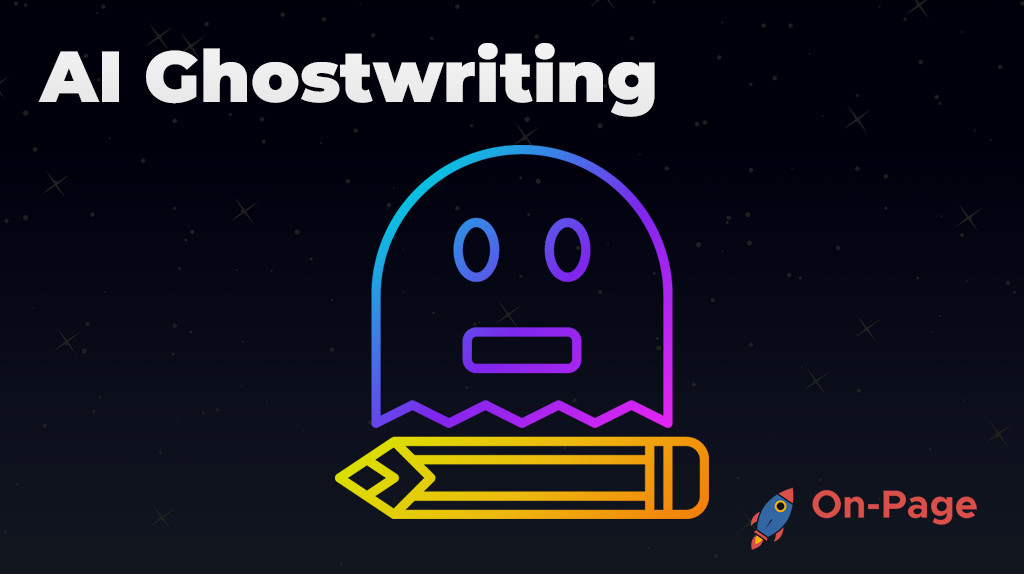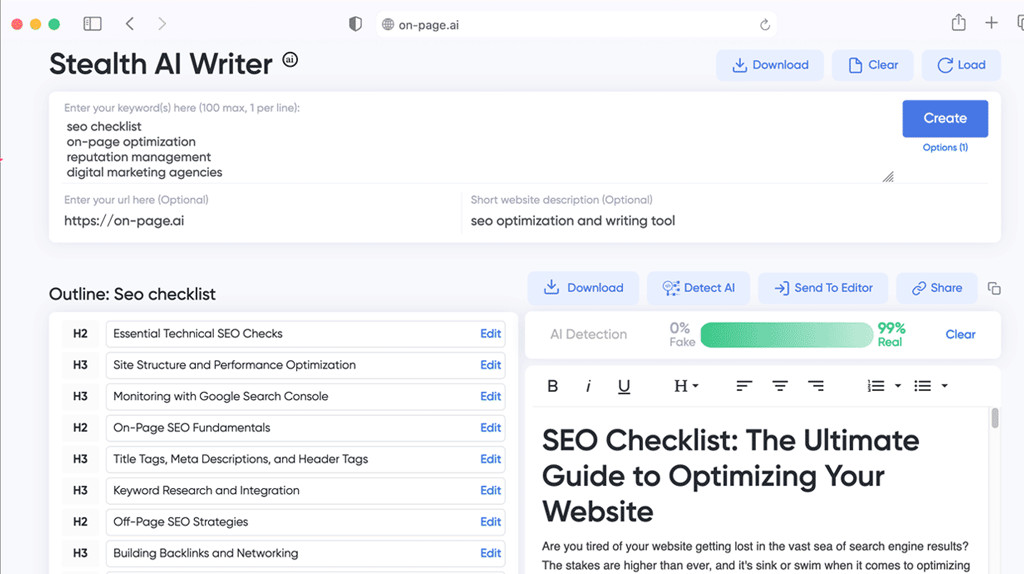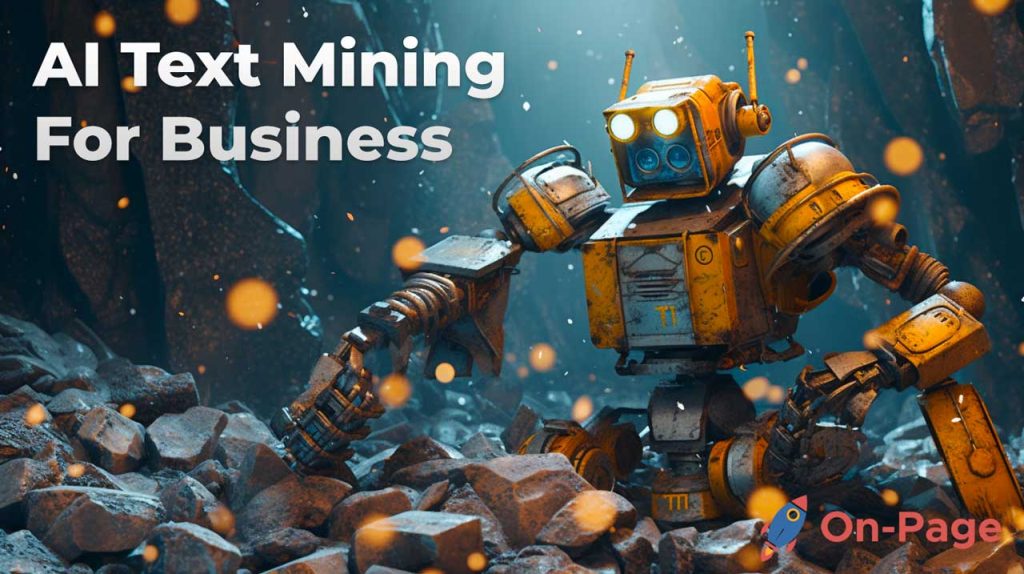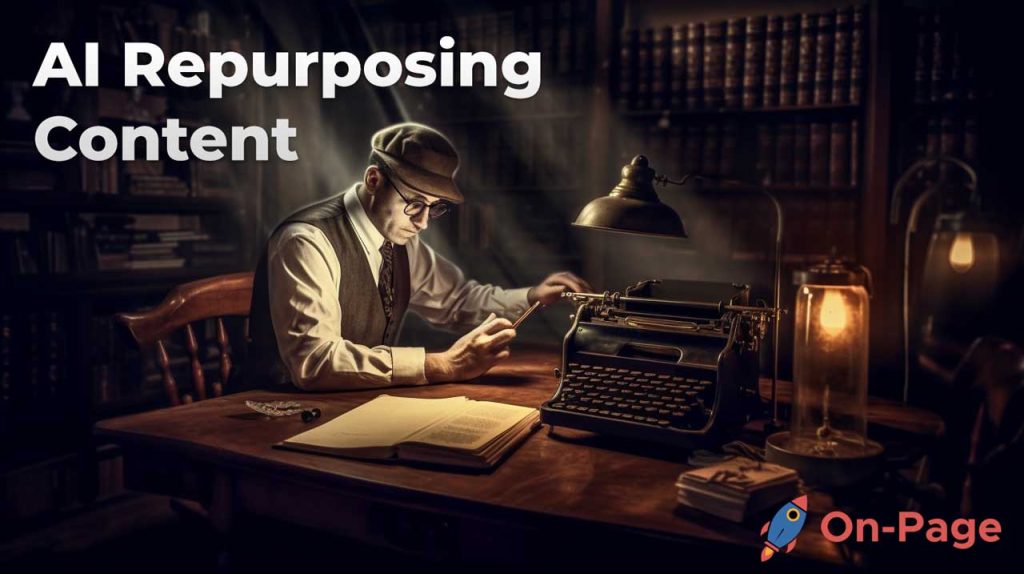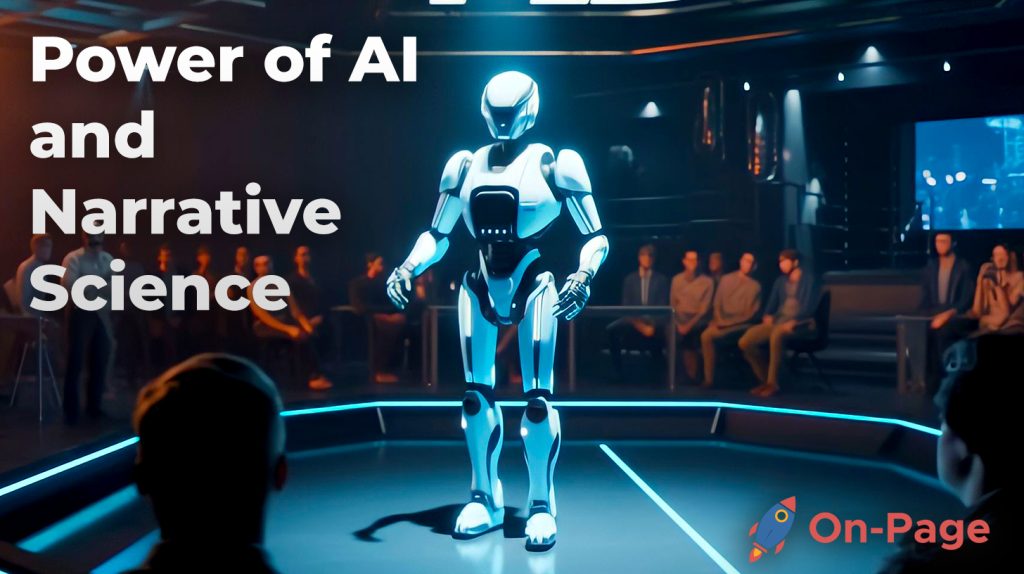Picture this: you’re up against a tight deadline, your laptop spits out an empty screen, and your brain feels like it has turned into mush. The writer’s block is real, but there’s a glimmer of hope on the horizon. Enter AI Ghostwriting—a revolutionary tool that transforms content creation from a daunting task to a streamlined process. In the ever-evolving digital world where speed and efficiency are key factors for success, leveraging Automated Writing will give you the competitive edge to stay way ahead of the curve. Say goodbye to long nights writing on an empty stomach and hello to endless possibilities with AI-powered content!
AI ghostwriting is the practice of using artificial intelligence technology to create written content such as product descriptions, headlines, ads, and social media captions. One major benefit of using AI ghostwriting tools is that they can save time by generating high-quality content faster than human writers. Additionally, these tools can help improve the accuracy and consistency of your writing while giving you more control over the tone and style. However, it’s important to carefully evaluate the quality of each tool before using it to ensure that it aligns with your needs and goals.
Understanding AI Ghostwriting
As the demand for online content continues to grow, so does the need for faster, more efficient methods of content creation. This is where AI ghostwriting comes in. AI ghostwriting is a technology that uses advanced machine learning algorithms to generate written content without human intervention. Essentially, it’s a tool that helps writers create high-quality content faster and more efficiently than ever before.
To help you understand how AI ghostwriting works, think about how your smartphone’s predictive text feature functions. When you begin typing a sentence on your phone, it suggests possible ways to finish your thought based on your previous typing behaviors. It’s essentially using predictive text to save you time typing messages. That’s essentially what AI ghostwriting does – it predicts what words should be used next to help provide greater efficiency when writing.
One key feature of AI ghostwriting is that it can learn from vast amounts of data and generate unique pieces of content that are optimized for different purposes without sacrificing quality or consistency. This is because the algorithms behind these tools analyze millions of web pages to identify patterns in language use and style.
AI-powered writing tools have come a long way since they were first introduced several years ago. They are now capable of producing text that is almost indistinguishable from human writing, allowing them to produce blog posts, news articles, and even product descriptions with relative ease.
However, one thing that sets AI ghostwriting apart from traditional writing methods is its ability to analyze large datasets in real-time and adjust language use according to individual needs. For instance, an online retailer can train an AI writer to write compelling product descriptions with relevant keywords and phrases specific to its products.
Some people believe that machines cannot replace human writers when it comes to creative work like novels or poetry. While this may be true for now, there’s no denying that AI-powered writing tools have made significant strides in this area. For example, a team of researchers at the Massachusetts Institute of Technology (MIT) recently developed an AI writing algorithm that was able to continue writing a Harry Potter tale after being fed a few initial sentences.
Despite the advances made by AI ghostwriting tools, some writers remain skeptical about their use. Some worry that using such tools could lead to a homogenization of writing styles, while others fear potential job losses in the writing industry.
Think of AI ghostwriting as your own personal writing assistant. The tools make the content creation process faster and more efficient, leaving you with more time to focus on other important tasks. Rather than replacing human writers, they work alongside them to improve the quality and speed of content production.
To understand the technical side of AI ghostwriting, let’s take a closer look at the algorithms behind these powerful writing tools and how they help produce high-quality content.
AI Technology Behind Ghostwriting
The AI technology behind ghostwriting is rooted in machine learning algorithms designed to analyze vast amounts of data to identify patterns and trends in language usage and style. Simply put, these algorithms are trained on large datasets of written texts to be able to write just like humans.
For instance, some AI-powered writing tools can analyze existing text passages, including articles or even entire websites, and then use this data to create new pieces of text automatically. The software will learn how different words and phrases are used within these texts before creating original content based on them.
An important aspect of this technology is natural language processing (NLP) capabilities. NLP allows machines to recognize human speech patterns and better understand nuances in language use such as figures of speech and slang terms.
This means that machines can analyze written texts much more effectively than ever before. They can learn from examples provided – including context – before generating high-quality text with little input from human writers.
Another key feature of AI ghostwriting is its ability to optimize content for different purposes. For example, an AI-powered writing algorithm can analyze search engine ranking factors and return the most relevant keywords and phrases to use based on the writer’s primary objective. This optimization capability makes it easier for content creators to ensure that their text is optimized for SEO purposes, leading to higher search rankings.
While there are many benefits to using AI-powered writing tools, some concerns have been raised regarding the accuracy and potential misuse of this technology. Some worry that machine-generated text could be used for unethical purposes such as spreading misinformation or propaganda, while others feel that it could be used to create fake news stories.
It’s important to note that these concerns center more around how the technology is used rather than a problem with the technology itself. As with any technology or tool, users must be responsible with how they put them into practice.
To better understand how AI ghostwriting works, think about how a chess computer program operates. The software analyzes millions of moves made by top players worldwide before generating unique strategies that can outplay even experienced human players. Similarly, AI-powered writing tools analyze vast amounts of written texts before producing content that is almost indistinguishable from human writing.
Now that we have a better understanding of the technical side and capabilities behind AI ghostwriting marketing/advertising copywriting.
- According to a study by the University of California, Berkeley, AI-generated content has seen a significant growth in quality over the past few years, with some instances being almost indistinguishable from human-written text.
- In a 2020 survey conducted by Content Marketing Institute, nearly one-third (31%) of respondents reported using AI-powered tools for creating and distributing content.
- A 2018 report from Accenture stated that AI-driven technologies like natural language processing (NLP) could lead to productivity gains of up to 40% in creative and content creation tasks.
Advantages of AI-Assisted Content Creation
Artificial Intelligence (AI) is becoming increasingly popular in the world of content creation. The technology behind AI-assisted writing has become so advanced that it can now generate high-quality, unique content that resonates with readers. Here are some advantages of using AI for content creation:
One advantage of AI-assisted content creation is that AI can produce a vast amount of content at an incredible speed compared to humans. For instance, if you want to create multiple blog posts on various topics, generating them manually can be time-consuming and tedious. However, with the help of an AI writing tool, you can automate the process and publish several blog posts within a short period.
Another advantage of AI-assisted content creation is that it ensures consistency throughout your content. Unlike human writers who may have different writing styles or make mistakes, an AI-powered tool generates uniform content according to your guidelines or brand voice. This way, you can create brand awareness and establish credibility among your target audience.
However, some people argue that AI-generated content may lack creativity and originality. They believe that human input is essential for successful creative output. While this may be true in some cases, modern AI tools have improved significantly to include features like tone analysis and natural language processing, which makes the generated content appear authentic.
Think of using AI for content creation as having another member in your marketing team who assists with low-level tasks such as topic research and proofreading without compromising quality. This way, your internal team members can focus on more complex tasks like strategy development or campaign management.
Now that we have explored some advantages of using AI for content creation let’s go deeper into how it provides increased efficiency and productivity.
- Artificial Intelligence (AI) is revolutionizing the content creation industry by offering numerous advantages such as producing a vast amount of content at an incredible speed, ensuring consistency throughout your content, and providing increased efficiency and productivity. While some people argue that AI-generated content may lack creativity and originality, modern AI tools have significantly improved to include features like tone analysis and natural language processing, making it appear authentic. Using AI for content creation is equivalent to having another member in your marketing team who assists with low-level tasks without compromising quality, freeing up time for more complex tasks. Therefore, businesses can consider implementing AI-assisted content creation solutions to stay ahead of competitors and establish credibility among their target audience.
Increased Efficiency and Productivity
One key benefit of using AI-assisted content creation is increased efficiency and productivity. AI-powered tools can automate many repetitive or time-consuming tasks involving content production, making it easier to publish quality content in a shorter time. Here are some ways that AI increases efficiency and productivity:
AI provides faster results compared to human writers. For instance, with On-Page.ai’s Stealth Writer, you can create an entire high-quality article with just one click in seconds without compromising its authenticity.
Over time, AI becomes smarter through the use of machine learning algorithms that allow it to learn from previous content generation sessions. This way, it can improve content quality and ensure that your publications translate well across different devices.
Some people believe that the use of AI technology for content creation may lead to concerns over job security for human writers. However, while there may be technological advances that cause job loss in various industries, such as the Industrial Revolution ushering factories into the world, the role of humans will still be relevant in content creation because AI can only do so much creative work.
In terms of efficiency and productivity improvement in marketing, incorporating the help of AI-assisted writing is like having a reliable personal assistant who covers all low-level tasks so you can focus on more critical business objectives.
Though there might be limiting factors concerning AI-based writing solutions’ ethics or concerns when it comes to data privacy regulations and developing trustworthy outputs, one thing for sure is that AI has become crucial even beyond digital marketing processes. As search engines continue to evolve, SEO professionals must embrace new technologies such as AI for successful online campaigns.
Limitations and Concerns with AI Ghostwriting
As with any emerging technology, there are valid concerns and limitations to the use of AI ghostwriting tools. While these tools offer increased efficiency and productivity, there is a risk that they may compromise the quality and authenticity of the content they produce.
One major concern is that AI-generated content may lack the human touch that makes written communication personal and relatable. Despite the sophistication of the latest machine learning techniques, there is still a certain warmth and creativity that can only be achieved through human writing. This is particularly important in fields such as creative writing, marketing and advertising where emotive language is crucial.
Another limitation has to do with the accuracy of AI-generated content and how it might reflect on a company’s image. With AI-powered content creation, there is always the risk of making offensive or inappropriate comments due to errors in programming. This could damage brand reputation and lead to economic loss if users choose to boycott products associated with insensitive messages.
To illustrate this point, consider an instance where a restaurant uses an AI model for creating social media captions. The algorithm generates a caption praising its newest dish, which happens to be vegetarian. However, given the influx of fake news on vegetarianism being less healthy than other diets, it generated negative reactions from potential customers who started accusing the restaurant of peddling unhealthy food.
Additionally, there have been instances where AI-generated content has been used maliciously for purposes such as creating fake news or propaganda. This presents a significant ethical concern since it could affect crucial decisions made by individuals or governments based on inaccurate information.
One recent example where this happened was in 2019 when an algorithm from OpenAI was able to generate realistic ‘deepfake’ articles that could potentially spread deliberate misinformation. As society depends more on internet sources for daily life decisions like news consumption we must do better.
Lastly, there is also the concern of job displacement among writers and content creators who may lose their livelihoods to machines that do better and cost significantly less. While AI ghostwriting has the potential to save businesses a great deal of money, it poses a significant threat to those whose jobs rely on creating content.
Despite these limitations and concerns, AI ghostwriting tools are rapidly becoming an indispensable part of the content creation process due to their increased efficiency and productivity. However, before adopting these tools, it is essential to consider the ethical implications of their usage.
Ethical Considerations
With AI-powered tools, ethics plays an increasingly important role in deciding whether or not an organization should adopt them. This is particularly true when it comes to content creation since articles are read by people worldwide with diverse cultural, racial, gender, religious and social identities.
A primary ethical consideration is whether AI-generated content is intentionally biased or skewed in its perspectives or topics it covers. With machine learning powering these algorithms, there’s a risk of reinforcing certain stereotypes or prejudices that could end up being harmful.
A classic example of bias affecting even the most sophisticated models came from Google which ended up admitting its search results were racially biased against black Americans. Many instances have been identified where important information was suppressed from pertinent voices because a team skipped over an essential feature like sentiment analysis when creating their model.
Another ethical responsibility associated with AI ghostwriting is transparency in content creation about the use of AI tools behind article creation. Publication of articles created with machine assistance should always be transparent so users can analyze the veracity of information presented in front of them.
On the other hand, some debate that transparency might result in lower rankings on Google and other search engines and rate webpages poorly if they were aware that an article was authored using ghostwriting software. To counter this argument or promote more transparency among users can be achieved by making a symbolic gesture in the form of certification which can be displayed on websites.
Furthermore, there is also the ethical concern of whether or not AI ghostwriters provide full recognition and appropriate payment to its writers. There are instances where ghostwriting companies fail to credit individual contributors for their content, thus compromising their career potential while marginalizing them from due professional growth opportunities.
Selecting the Right AI Ghostwriting Tool
Selecting the right AI ghostwriting tool can be a daunting task as there are numerous options in the market. It is essential to consider a few factors before making a final decision. First, you should know your requirements and understand what you want to achieve with AI-assisted content creation. Some tools are designed for short-form content while others focus on long-form writing. Tools also differ in their ability to generate unique articles or rewriting existing ones.
Secondly, it is important to research the specific features and capabilities of different tools. Evaluate whether the tool offers templates or character options for your brand’s demographics, how many languages it covers, and whether it has a collaboration feature that allows editing from multiple individuals simultaneously. You must also confirm if the tool integrates with other software you use regularly to ensure seamless workflow automation.
Thirdly, take note of its ease of use and customer support experience since effective communication is key during the initial stages while learning the ropes of an AI-powered tool.
For instance, let’s say you are a small business owner who wants to liven up your social media presence without having to assign an entire employee to manage it entirely. In this case, based on your individual requirements such as affordability and simplicity, you might choose an AI tool that provides pre-made templates that could work for businesses within your industry at a pocket-friendly price point.
On the other hand, a professionally oriented writer aiming to deliver a 700-word niche-related blog post for their client would require an AI-based writing platform that offers dedicated research modules and customizable tone preferences so that they can produce well-articulated content in line with the client’s primary keywords.
It’s also worth noting that while AI ghostwriting presents efficiency gains in terms of faster turnaround time and reduced workload on busy writers, it creates ethical concerns about originality and quality. Critics argue that these tools can produce shallow content or lack creativity through the use of repetitive themes. Moreover, some businesses might resort to plagiarism emerging from unchecked sources and duplicate content, which may cause significant SEO ranking drawbacks.
However, leading AI ghostwriting tools have surpassed these limitations and evolved to become more sophisticated, using advanced algorithms that assess engagement metrics such as readability scores and outbound click rates. A highly praised platform, like On-Page.ai’s Stealth Writer tool, goes beyond basic writing functions and creates unique articles from scratch that pass the detection system criteria while maintaining a high standard of relevancy in web searches.
Evaluating Tool Features and Compatibility
A critical factor when selecting an AI-assisted content creation tool is assessing its features’ compatibility with your business’s existing processes. This ensures smooth integration and minimizes any disruption in your workflow. When evaluating tool features and compatibility, ensure you consider the following:
1. Content management capabilities: Evaluate how the tool stores, organizes, and manages produced content. Abilities such as content scheduling, uniform formatting across different devices like mobiles or tablets for compatibility purposes, are essential to enhance efficiency in publishing content.
2. Customization options: A crucial feature to consider is whether the tool provides customization options that let you tailor the writing experience to your desired tone of voice or branding standards.
3. Integration with other software: Before implementing any new software tool for your business process, check if it integrates with existing programs that your team regularly uses like email clients, social media platforms, or project management tools to maintain consistent data flow in real-time.
Let’s say you use WordPress as your CMS (Content Management System). You can benefit from evaluating AI ghostwriting tools that support WordPress plug-ins by providing optimal interactivity between both platforms without compromising on functionality.
Consider selecting an AI ghostwriting tool as you would pick the right instrument for a creative job. The tool must satisfy your business’s distinct needs, align with your team’s strengths while addressing their weaknesses, and elevate the user experience.
With these considerations in mind, research critically before selecting an AI ghostwriting tool that is in line with your goals and available resources. The use of AI-powered writing solutions can be correct and beneficial when eliminated limitations and guided by ethical considerations to create apt, unique content. If you are an SEO specialist, On-page.ai is the best choice for you.

